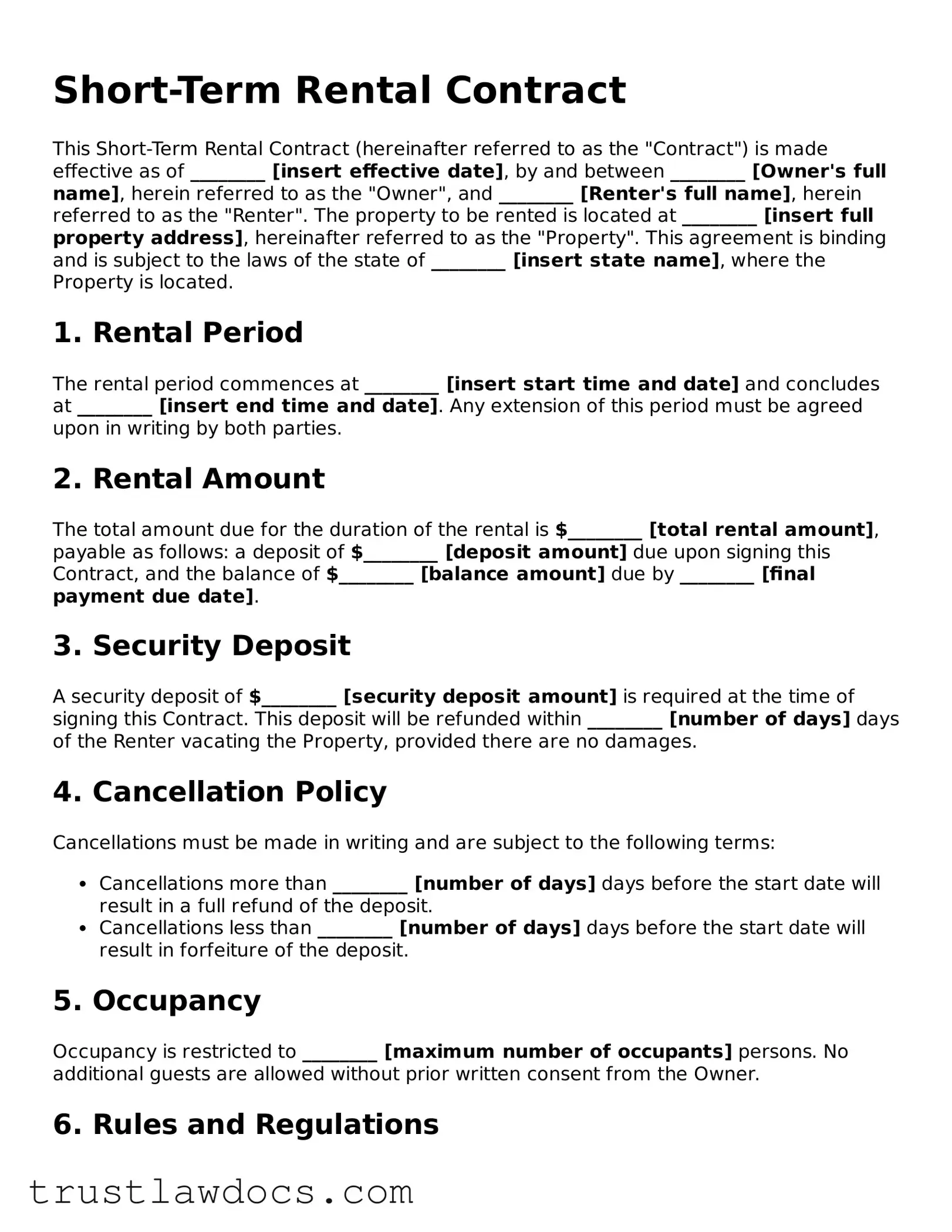Short-Term Rental Contract
This Short-Term Rental Contract (hereinafter referred to as the "Contract") is made effective as of ________ [insert effective date], by and between ________ [Owner's full name], herein referred to as the "Owner", and ________ [Renter's full name], herein referred to as the "Renter". The property to be rented is located at ________ [insert full property address], hereinafter referred to as the "Property". This agreement is binding and is subject to the laws of the state of ________ [insert state name], where the Property is located.
1. Rental Period
The rental period commences at ________ [insert start time and date] and concludes at ________ [insert end time and date]. Any extension of this period must be agreed upon in writing by both parties.
2. Rental Amount
The total amount due for the duration of the rental is $________ [total rental amount], payable as follows: a deposit of $________ [deposit amount] due upon signing this Contract, and the balance of $________ [balance amount] due by ________ [final payment due date].
3. Security Deposit
A security deposit of $________ [security deposit amount] is required at the time of signing this Contract. This deposit will be refunded within ________ [number of days] days of the Renter vacating the Property, provided there are no damages.
4. Cancellation Policy
Cancellations must be made in writing and are subject to the following terms:
- Cancellations more than ________ [number of days] days before the start date will result in a full refund of the deposit.
- Cancellations less than ________ [number of days] days before the start date will result in forfeiture of the deposit.
5. Occupancy
Occupancy is restricted to ________ [maximum number of occupants] persons. No additional guests are allowed without prior written consent from the Owner.
6. Rules and Regulations
The Renter agrees to abide by all local, state, and federal laws. Additionally, the following rules apply:
- No smoking inside the Property.
- No pets allowed without prior agreement.
- Respect the Property and neighbors by keeping noise to a minimum.
7. Liability
The Renter shall be responsible for all damage or loss to the Property, excluding normal wear and tear. The Renter agrees to indemnify and hold harmless the Owner from any liability for personal injury or property damage sustained by any person (including guests) as a result of any cause, unless caused by the negligent or willful act of the Owner.
8. Governing Law
This Contract shall be governed by and construed in accordance with the laws of the state of ________ [insert state name], without giving effect to any principles of conflicts of law.
9. Entire Agreement
This Contract constitutes the entire agreement between the parties and supersedes all prior or contemporaneous agreements, representations, or understandings, whether written or oral.
IN WITNESS WHEREOF, the parties have executed this Contract as of the date first above written.
Owner's Signature: ___________________________ Date: ________
Renter's Signature: ___________________________ Date: ________
